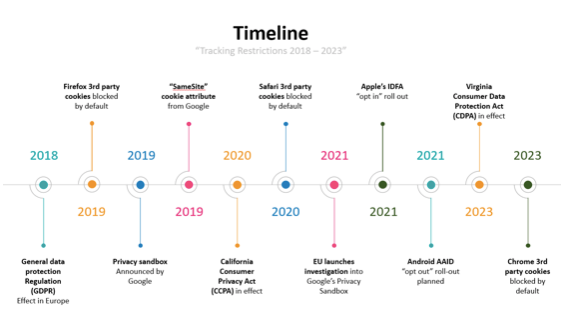Why Consumer Interest And Behavior Matter Evolving Digital Advertising While Improving User Privacy
By: Mohamed Mahmoud, Head of Client Partnerships & Data, MEAI Consumer Cloud Service Dept, Huawei
Data is power
The traditional way of identifying consumers’ needs is always evolving, as a result of factors such as identifiers, privacy, and personal preferences. However, since data is the key to success, it is imperative that organizations manage their budgets wisely.
The demand for the protection of digital data and personally identifiable information (PII) of online users has increased since the turn of the century. This rising emphasis on privacy corresponds with the growing number of Internet users, their expanding personal experience and awareness, the personal data sharing of Web 2.0, and recurrent high-profile data breaches. As a consequence of these shifts in the data landscape, rules became laws and IT giants started to react to the accumulating pressure.
Technology plays a vital role in every industry. Since the General Data Protection Legislation (GDPR) went into force in Europe, followed by the California Consumer Privacy Act (CCPA), organizations must be transparent about their data privacy policies. Most browsers (cookies) and mobile advertiser identifiers (MAID) started to make significant adjustments on this front, such as blocking third-party cookies by default and requiring users’ consent to serve ads to them..

Still, large corporations continue to force users into accepting personalized ads. Meta was recently fined US $414 million by the European Union for relying on agreements with its users to legitimize its use of so-called behavioral ads that target users based on their online activity. The lawsuit focuses on how Meta obtains users’ legal consent to gather their data for personalized advertising. The company’s terms of service agreement – the lengthy document that users must accept to gain access to services like Facebook, Instagram, and WhatsApp – contains language that effectively requires users to either consent to the use of their data for personalized ads or stop using Meta’s social media services.
The drop in consent rates, the increased maturity of users, and the stricter enforcement of privacy legislation are all having a negative impact on publisher income, performance, and the ability to monetize audiences. As a response, the majority of publishers began to deploy, in-house or via a custom tech stack, alternative solutions that do not depend on third-party cookies, as well as contextually enhanced advertising.
Google’s Privacy Sandbox
Google has launched the Privacy Sandbox on Android in order to bring more private advertising solutions that restrict the sharing of user data with third parties and work without cross-app identifiers, including advertising IDs. The company is also exploring technologies that reduce the possibility of covert data collecting, such as safer methods for applications to integrate with advertising SDKs. In addition, the Privacy Sandbox on Android builds is supposed to provide a clear route forward for enhancing user privacy without compromising access to free content and services..
Google’s plan to phase out third-party cookies in Chrome is part of a larger strategy to create a privacy sandbox with open standards for tracking users while protecting their privacy (e.g., through new browser APIs like trust tokens), but the company is currently facing serious challenges in the form of antitrust investigations from the EU Commission and the UK’s Competition and Markets Authority (CMA).
Even though Google has not yet determined or implemented its final proposals, there are concerns that they might distort competition. The new solutions should not impede the capacity of publishers to generate revenue and limit competition in digital advertising, which would result in a greater concentration of advertising spend on Google’s ecosystem and create monopolistic conditions.
Petal Ads combines privacy and personalization
Personalization plays a vital role for Petal Ads in enhancing relevance for users and maximizing ROI for advertisers. It targets consumers based on user data and serves more relevant ads, resulting in a better user and advertiser experience.
The platform is fueled by both first-party and third-party data, but it enforces user data protection in personalized advertising by restricting the collection of sensitive data that corresponds to sensitive interest categories. Petal Ads also forbids the use of sensitive interest categories to target users. When promoting products and services that fall under sensitive interest categories, advertisers cannot utilize personalized ad targeting capabilities; however, they may still employ non-personalized Petal Ads features. Briefly, Petal Ads outlines sensitive interest categories in terms of the following principles:
- Legal restrictions: Ads must adhere to all policies, laws, and regulations of the locations where they are delivered .
- Personal dilemma: Ads should not target users by exploiting their difficulties or struggles.
- Personal identities and beliefs: Ads should not target users based on information prone to discrimination, unfairness, and stigmas.
In addition, Petal Ads safeguards and processes the personal information of users in a suitable manner. Therefore, advertisers should not abuse or collect such information without a clear purpose, proper disclosure, or adequate security measures.
Petal Ads expands beyond Huawei devices to include personalized ads not just on smartphones and laptops, but also on smartwatches and audio devices, as well as within news feeds, on the Assistant or Petal Search results pages. By safely aggregating data from all the traffic generated by Huawei’s platform, devices, and IoT-connected ecosystem, Petal Ads is positioned to deliver huge efficiencies and lower advertising partners’ media buying costs.
About Petal ads
Petal Ads grew into a vibrant marketplace with 4 billion daily ad requests, integrated over 360,000 global publishers, and evolved to serve customers beyond HUAWEI devices. The platform is now reflecting on the ecosystem’s growth and will begin a new era as Petal Ads.
As consumers are shifting the way they search for information online and with mobile virtual assistants playing an increasingly important role in how people and businesses connect, through all this innovation and change, protecting the safety and security of our customers and partners remains Petal Ads’ top priority.
The mission for Petal Ads is to be a connector in a sea of possibility. By working with media partners, publishers, advertisers, MMPs and Industry bodies, it will continue to bring innovative ad experiences to all savvy device users worldwide.
While the large consumer base of over 700+ million monthly active users is already a compelling proposition, it will only expand with time. Huawei’s 1+8+N strategy envisions bringing the Petal Ads offering to the company’s portfolio of devices, wearables, and IoT (Internet of Things) devices.
To learn more about Petal Ads, you can reach out to us at adsmea@huawei.com.




